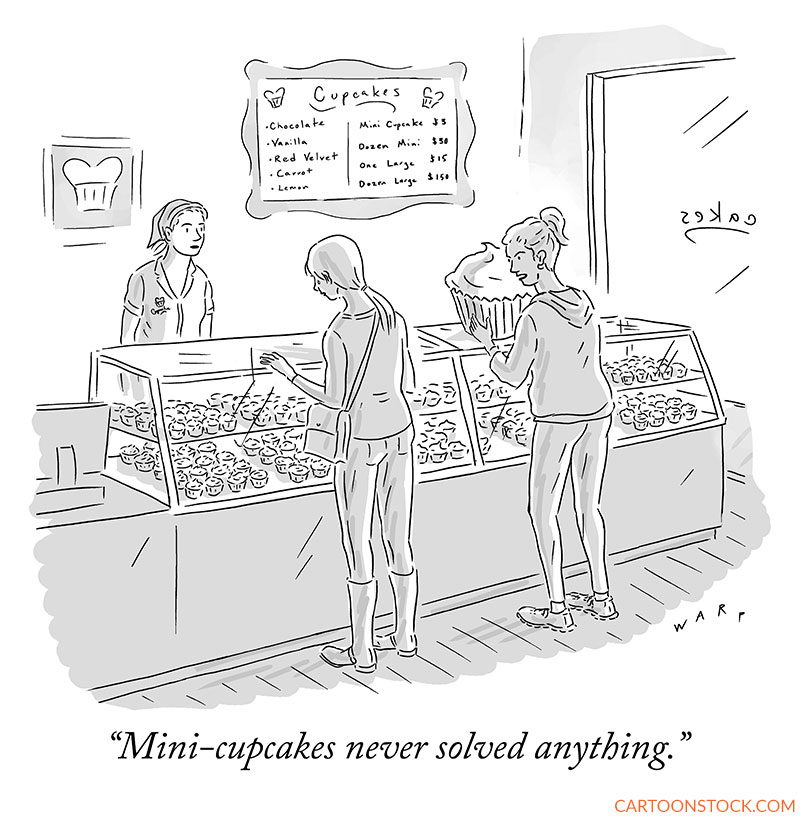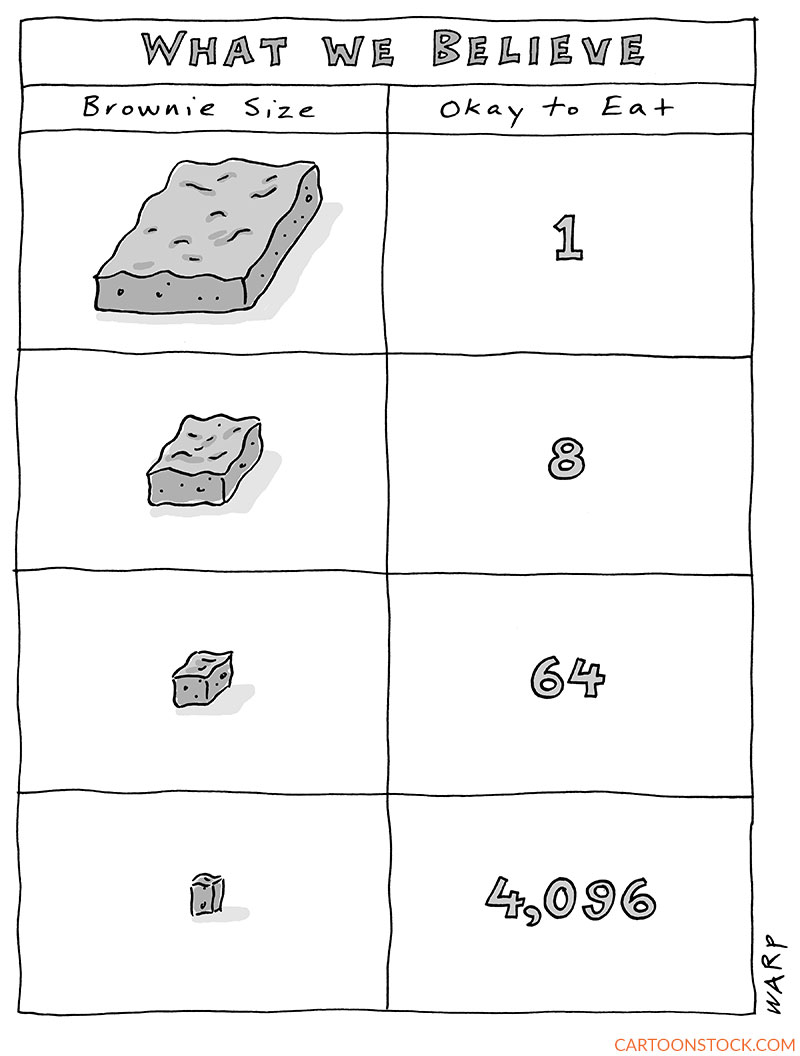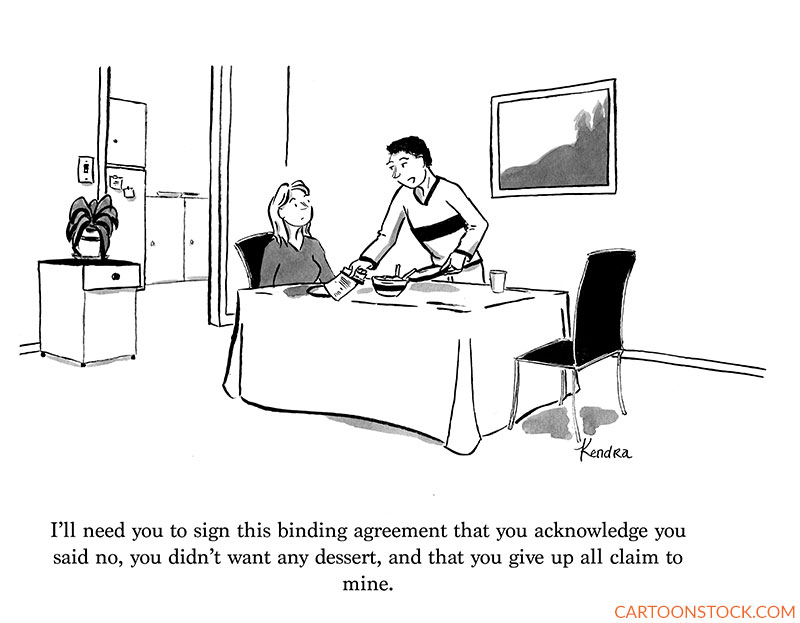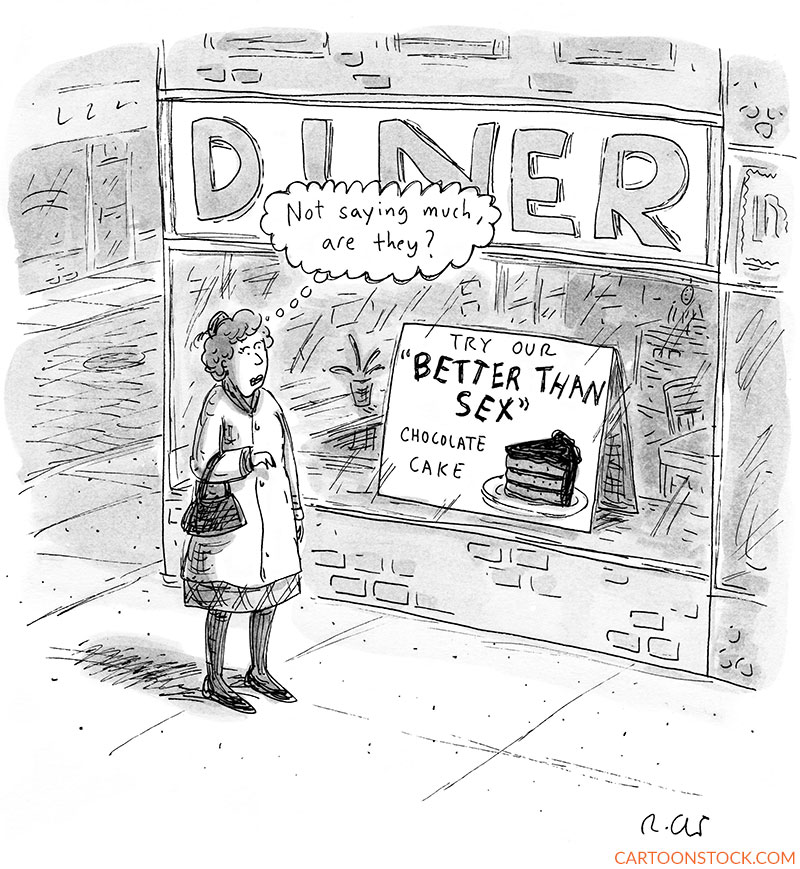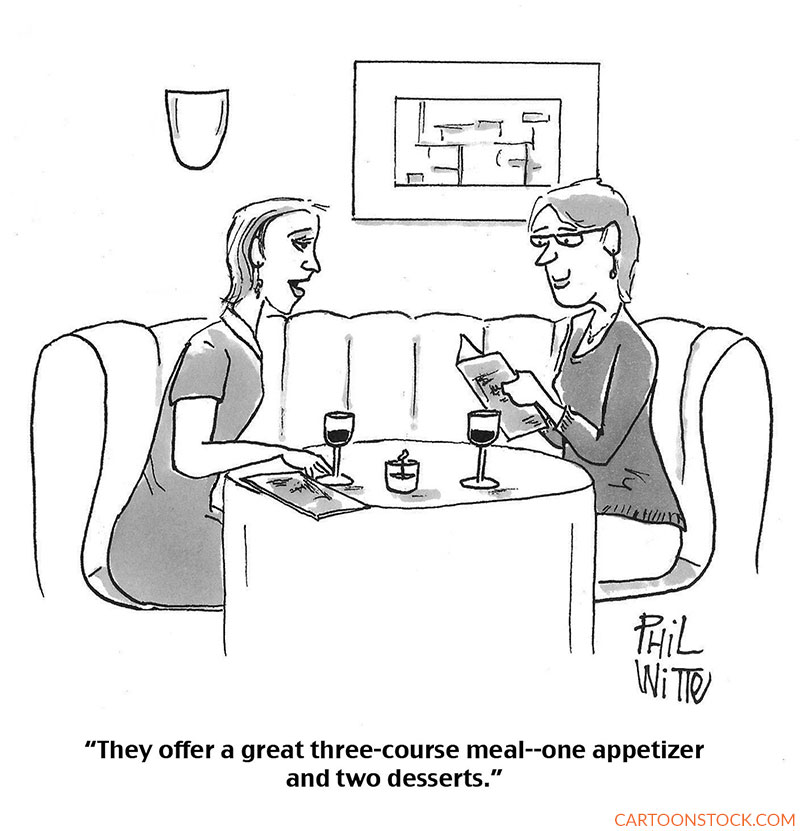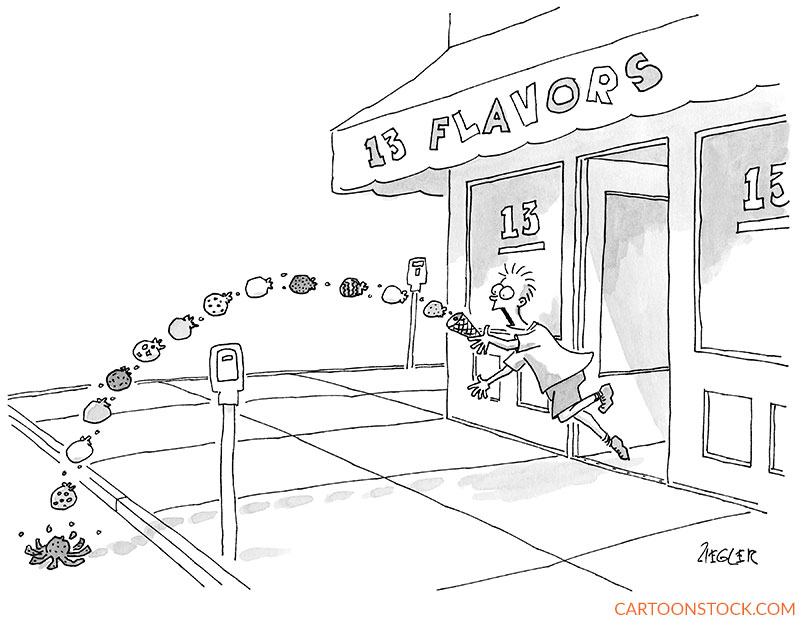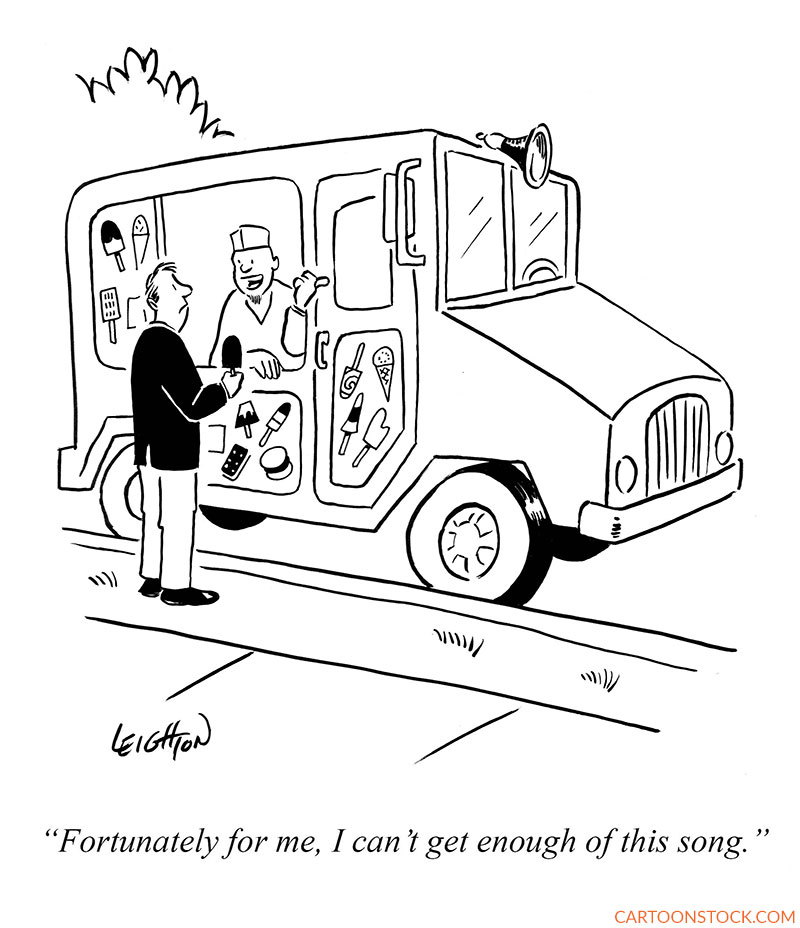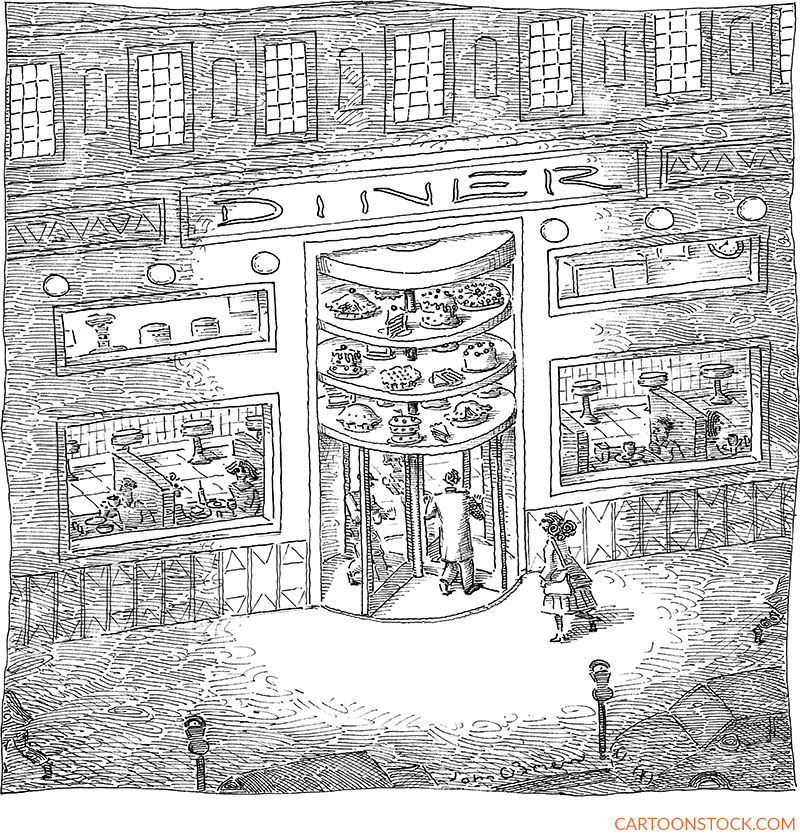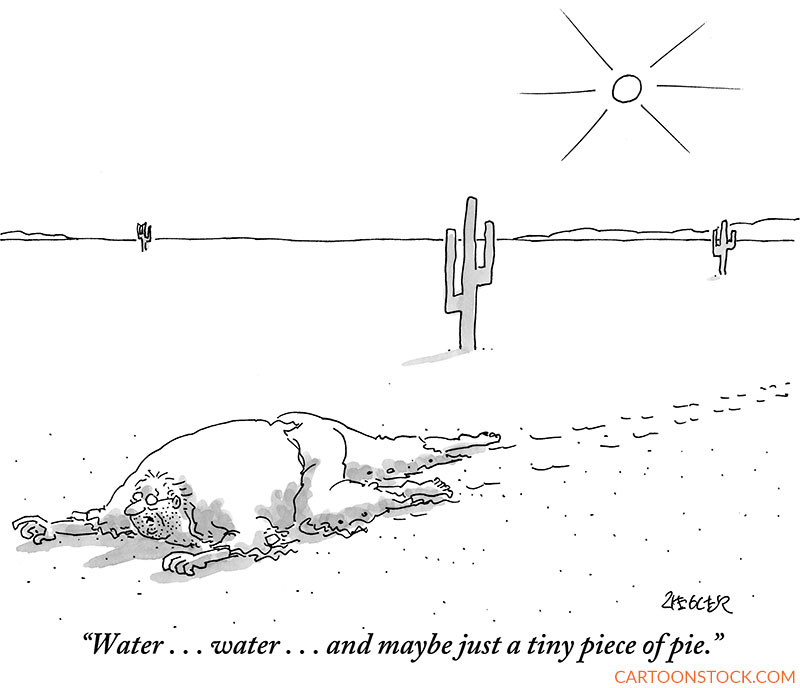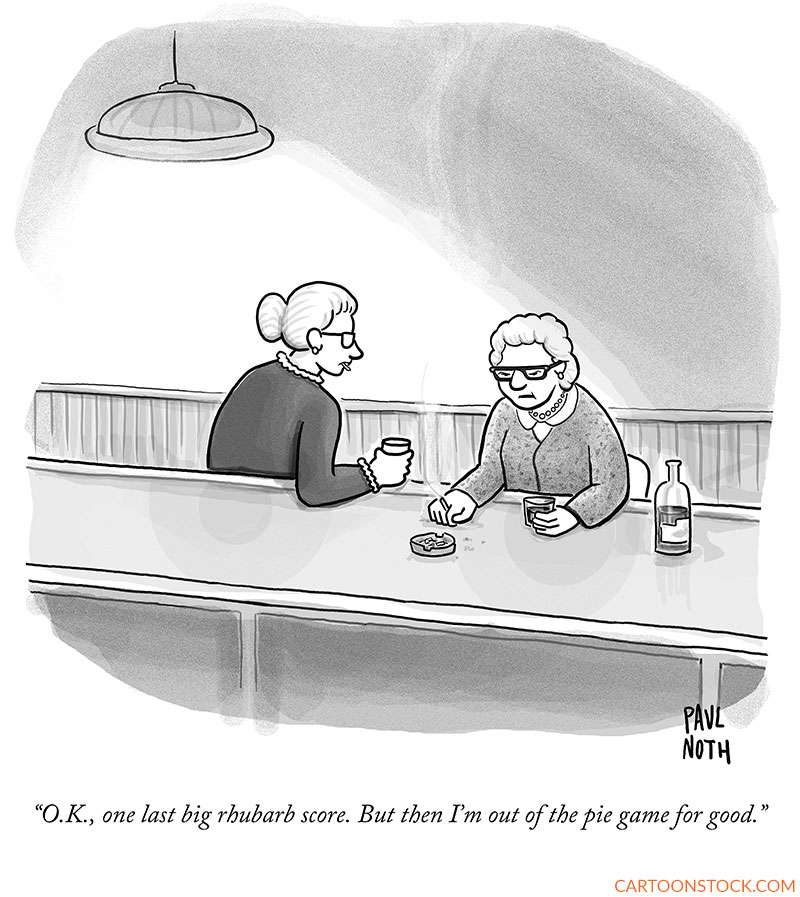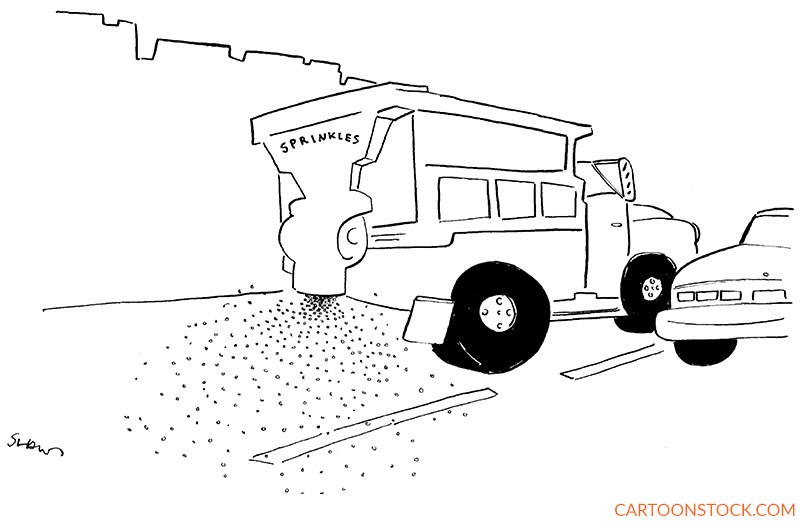
Cartoon critics Phil Witte and Rex Hesner look behind the gags to debate what makes a cartoon tick. This week our intrepid critics take a look at dessert cartoons.
With so much conflict these days, here’s something we can agree on: dessert is good. And yet, dessert poses its own internal conflict: to eat or not to eat. What have we done to deserve dessert? May we promise ourselves to exercise tomorrow to justify the dessert we eat today? From such conflict, cartoons are born.
Kim Warp delves deeply into this topic in two cartoons. Confronted with an obvious choice, the speaker’s attitude seems contemptuous. The brief caption speaks volumes about our need to satisfy human desires, and the idea that a baked confection can “solve” something is inspired.
In the next cartoon, Warp illustrates the mindset that allows us to justify nibbling. Logic flies out the window when brownies come through the door. And, yes, for the mathematically inclined, 64 times 64 is 4,096.
Kendra Allenby’s cartoon exemplifies how one’s ambivalence toward dessert may affect one’s domestic partner. This scene, in some form, has likely played out many times in innumerable households. If this guy thinks that formalizing a declination of dessert will deter his partner from poaching from his plate, he will be sadly disappointed.
“Sex sells” is a marketing cliché, and using a sexual angle to lure customers into buying a tasty treat is nothing new. Sometimes the sales pitch misses the target audience, as in this Roz Chast cartoon. Like a slice of good chocolate cake, this cartoon is bittersweet.
Once again, women consider dessert, but this time with no sense of ambivalence, in a cartoon by this blog’s co-author, Phil Witte. The restaurant setting, with the white tablecloth and framed modern art, signals we’re uptown with ladies who lunch. We eavesdrop on a moment of joyous discovery; would this not be the perfect meal?
When it comes to wildly original gags and brilliant artistic execution, few can equal Jack Ziegler. This caption-less cartoon is poetry in motion. The look of horror on the boy’s face, the arc of scoops over the parking meter, and the plop of the top scoop onto the street constitute a lesson in cartoon composition. Perhaps if the child had limited himself to 12 flavors, he would not have been so unlucky.
A safer way to secure ice cream is from an ice cream truck, but that means patronizing a business that blares an incredibly annoying tune on an endless loop. Robert Leighton takes aim at these vehicular torture machines in a cartoon that features a contented employee. The perfectly worded caption underscores the absurdity of the humor.
Cartoonist and illustrator John O’Brien finds inspiration in the rotating display cases of old-fashioned diners. This caption-less cartoon, like many of his cartoons, has an unreal or dream-like quality. The entrance to the diner seems illuminated as if by a spotlight focused on a stage set. A cozy booth and sweet confections beckon from within.
Back to Jack Ziegler’s wildly imagined world, a desert-crawler—a cartoon archetype—would like more than liquid refreshment. He’s chubbier than most cartoon desert-crawlers, which may explain his modestly worded special request.
Pie is once again the subject, this time in a cartoon by Paul Noth. These two grannies are up to no good, even if exactly what they’re plotting isn’t spelled out. The humor, of course, is taking a cliché storyline—the life-long gangster reluctantly agreeing to one last job—and swapping out hoodlums for little old ladies. The unexpected caption is a winner.
We conclude with another no-caption cartoon, this one by Michael Shaw. His thin, simple line pairs well with all of those tiny dots on the street. What a fun idea: road salt in winter and sprinkles the rest of the year.


